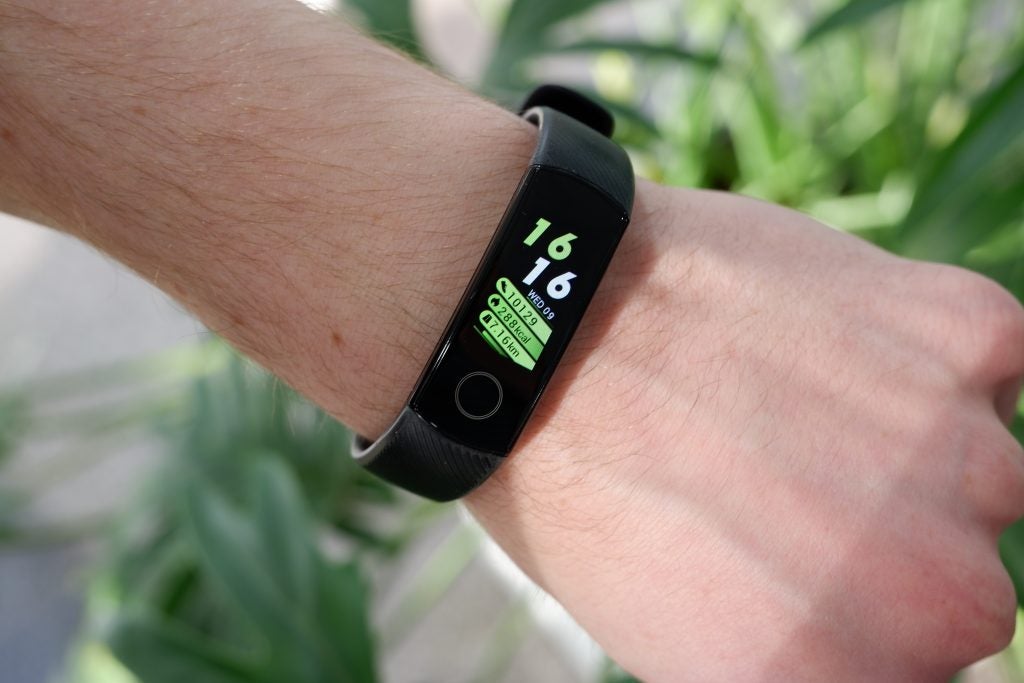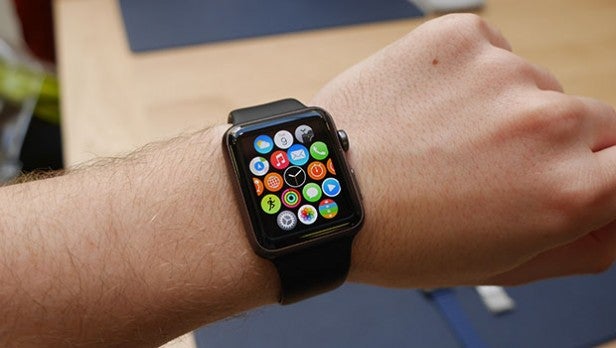Best Fitness Trackers: From running to strength training, there’s a fitness tracker out there for everyone and these are our top picks.
Much like with the best smartwatches, asking which fitness tracker is the best one to buy can depend entirely on your fitness goals and your current exercise routine. For instance, fitness watches and fitness bands both fall under the ‘fitness tracker’ umbrella, but they can vary wildly in price.
To keep things simple, we’ve highlighted the best fitness trackers for different use cases below, but if you’re still undecided then read through the descriptions of each entry on this list to see if one particular wearable jumps out at you.
- Best for serious fitness fans: Polar Vantage V2
- Best for extreme sports: Garmin Fenix 6 Pro Solar
- Best under £200: Fitbit Versa 3
- Best all-rounder: Fitbit Sense
- Best budget Fitbit: Fitbit Charge 4
- Best looking fitness tracker: Garmin Venu
- Best budget fitness band: Honor Band 5
- Best for those who just want an Apple Watch: Apple Watch Series 3
Related: Best smartwatch
How we pick the best fitness trackers
Fitness trackers are generally designed to integrate into your everyday life, giving you helpful nudges towards better lifestyle choices and making you more conscious of your activity levels. For that reason, we find the best way to test a fitness tracker is to live with it over a prolonged period of time.
By doing this, we gain an understanding of the level of insight it provides, its accuracy against our reference trackers, and how useful it makes all of the data for the user. It’s no good having a multitude of sensors if the information they gather isn’t presented in an understandable and useful manner. To achieve this, a fitness tracker needs to have a user-friendly and approachable companion app.
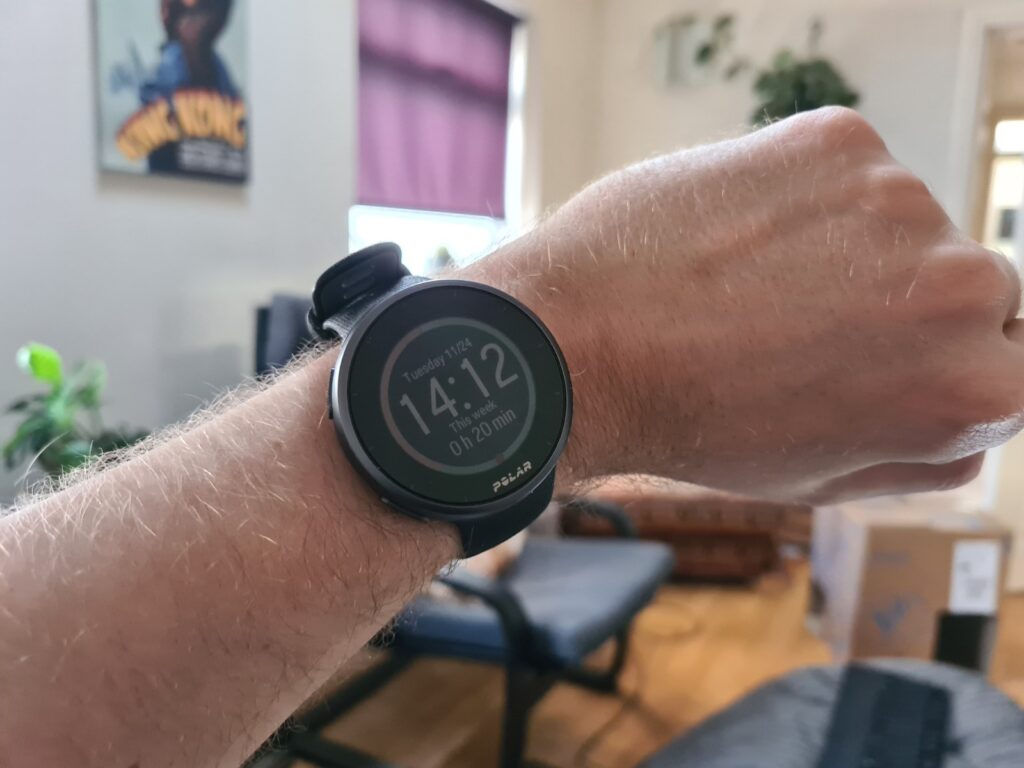
1. Polar Vantage V2
The V2 is made with experienced runners and athletes in mind
Pros:
- Comfortable fit
- Solid activity and distance tracking
- Advanced suite of post-workout metrics/services
Cons:
- No local music storage
- Local maps not as developed as Garmin’s
Polar has made great fitness trackers to rival those from Garmin and Fitbit over the years, and the recent Polar Vantage V2 shows just how far that innovation has come. It might look small, but the Vantage V2 packs an abundance of features designed to help serious fitness junkies train more efficiently.
The V2 gives you access to Polar’s ‘Training Load’ program, letting you see exactly how you’ve performed in a given workout in regards to your training history, so you can know immediately if you’re underperforming or hitting the right level of intensity. Recovery is also given its due however, with detailed sleep tracking statistics alongside Polar’s ‘Recovery Pro’ software, you’ll know exactly if your body is ready to take on another workout.
What holds the V2 back from being an absolute winner is its lack of offline music playback – which can be a dealbreaker for anyone who enjoys listening to music while they run. Similarly, Polar’s map tracking just isn’t up to the same standard as what you can find on Garmin’s wearables, so if location data is a key feature for you then it’s better to look elsewhere.

2. Garmin Fenix 6 Pro Solar
Best for extreme athletes
Pros:
- Best in class battery life
- Near indestructible design
- Excellent fitness tracking and coaching services
- Lots of storage for maps and local music
Cons:
- Very expensive
- Limited smartwatch functionality
If the regular Garmin Fenix 6 Pro doesn’t sound hardcore enough for you, then you’ll likely want to check out its Solar sibling. The Solar Edition takes all the great features of the regular Pro and improves them by adding a wealth of even more extreme activities to track and a nifty new “Power Glass” design.
The glass aims to lengthen the watch’s already industry leading battery live by letting it collect solar energy – hence the name.
This may sound like a gimmick, but during testing we found there was a lot of truth to the claim. Testing it directly against the Fenix 6 Pro in the – not exactly sunny – UK the Solar generally lasted for an extra day. This meant you could easily get at least a fortnight’s regular use out of it off one charge.
Maintaining its extreme feel, the watch also adds new tracking services for mountain biking, indoor climbing and surfing, making it the best wearable on the market for extreme athletes that like to partake in the odd ultramarathon.
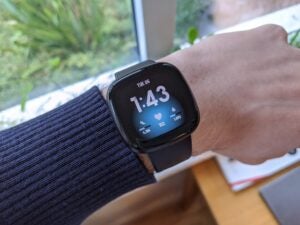
3. Fitbit Versa 3
The best fitness tracker under £200
Pros:
- Feature-packed for the price
- GPS is finally here
- Six-day battery with intensive use
Cons:
- Fitbit’s apps and app store still need work
- The step count is just too eager
- Still no support for offline Spotify
- Fitbit Premium is essential for getting your money’s worth
If you’re looking for a fitness tracker that offers a good set of features for less than £200, you can’t go wrong with the Fitbit Versa 3.
The Versa 3 benefits from premium features such as built-in GPS tracking and offline music storage, all while being £100 less than the Fitbit Sense, allowing users to benefit from these features without breaking the bank.
The fitness band also benefits from an impressive six-day battery life and supports both Alexa and Google Assistant, displaying answers on its bright 1.58-inch 336 x 336 display.
As far as fitness tracking goes, the Versa 3 takes advantage of sleep tracking as well as Fitbit’s new PurePulse 2.0 technology to measure your heart rate throughout the day. However, to get the most out of your Fitbit you’ll want to subscribe to Fitbit Premium, which could be a deal breaker for some.
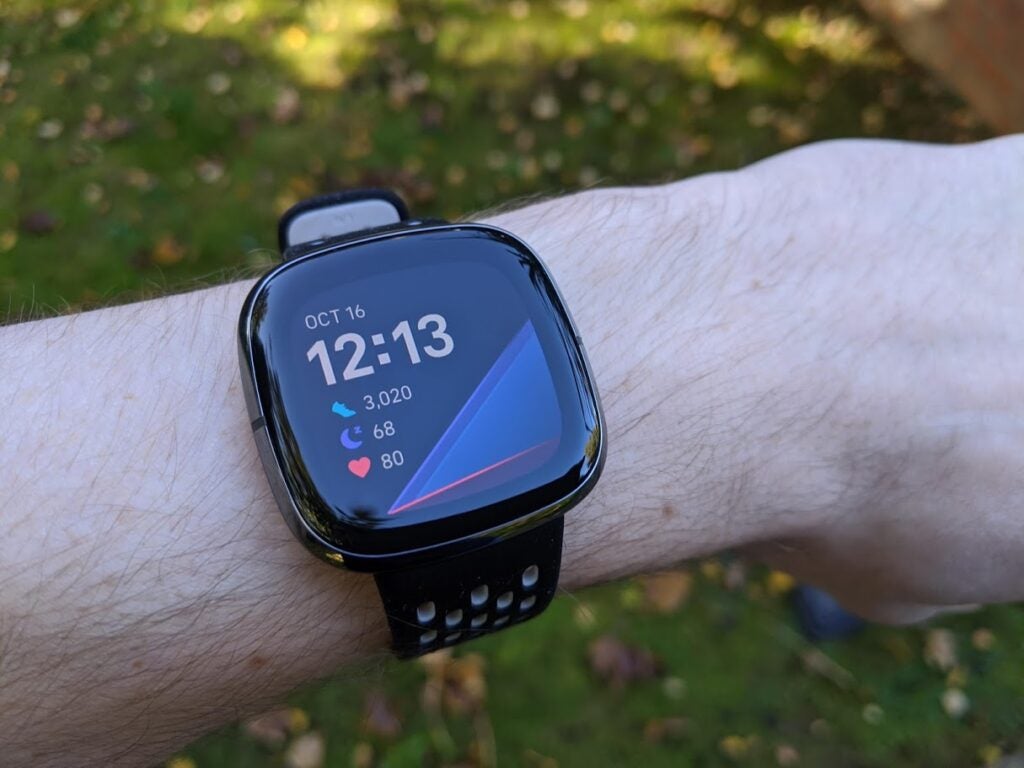
4. Fitbit Sense
Fitbit’s premium wearable is just the right blend of health and fitness tracking
Pros:
- New focus on health tracking
- Great battery life
- Fast GPS tracking
- Informative running data
Cons:
- Offline playback limited to Pandora/Deezer
- Overzealous step counter
- Fitbit Premium required for best use
- Back panel scratches easily
After the mixed reception of the Fitbit Ionic, Fitbit abstained from adding a new premium wearable to its range for quite some time – that is until the Fitbit Sense came along, and it was certainly worth the wait.
The Fitbit Sense marks a noted shift in focus for the company, with the device placing just as great an emphasis on health tracking as it does on fitness. The biggest feature to this end is the new EDA sensor, which tracks changes in your body temperature and perspiration that can indicate stress levels as well as oncoming illnesses.
As you might expect from a premium wearable, the Sense is packed with features including offline music storage (Deezer only in the UK) and untethered GPS tracking. Just be aware that you’ll need a Fitbit Premium subscription to get the most out of the device, so be sure to factor that into the price of the overall purchase.
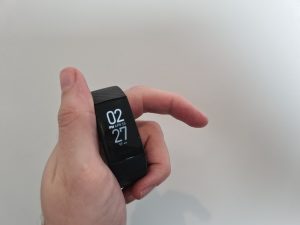
5. Fitbit Charge 4
Fitbit finally adds GPS to its flagship band
Pros:
- Excellent location and fitness tracking
- Easy to use
- Great battery life
- GPS tracking
Cons:
- No local music playback
The Fitbit Charge 4 is an ideal training companion. The watch features a sleek, discrete design, stellar battery life and tracks all the metrics newbie gym goers need. These include cardio, running, cycling and swimming, but what differentiates it from the pack is the included 40-day trial to Fitbit Premium.
For those out of the know, this is a great service that offers users guided workouts covering yoga, general cardio and weights. It’s a great way to get you started on a new fitness regime, that offers step by step instructions on how to do each exercise.
It also has a few key additions that will appeal to more serious athletes. The biggest are the inclusion of an in-built GPS, SpO2 sensor and Active Minutes tracking metric. The GPS will be a boon for runners and cyclists who like to exercise in the great outdoors. It means you’ll be able to get accurate distance tracking without having to pair the tracker to your phone.
The SpO2 sensor and Active Minutes back this up, letting the Fitbit offer guidance on how effective your workout was and your overall fitness level.
The only downside is that it doesn’t feature local music playback and can only be used to control Spotify when paired to a phone. But at this price that’s hardly surprising.
• Read our Fitbit Charge 4 review
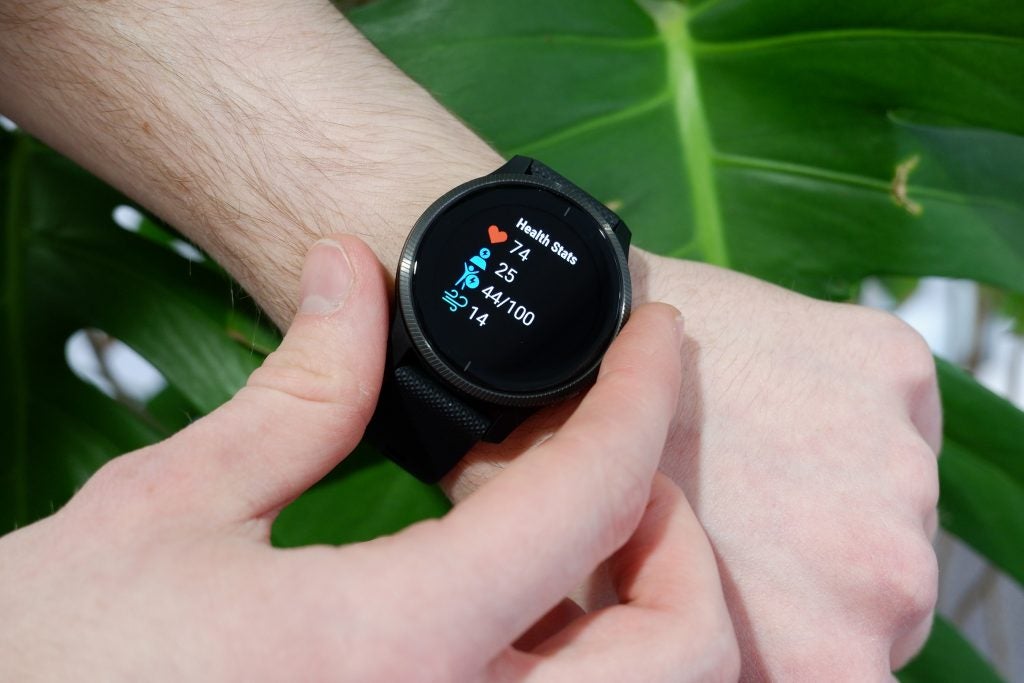
6. Garmin Venu
The Venu is Garmin’s most fashionable wearable to date
Pros:
- Best-in-class fitness tracking
- Up to 5-day battery life
- Bright AMOLED display
Cons:
- High asking price
- Too similar to the Vivoactive 4
Even though its devices absolutely trounce the competition where fitness tracking is concerned, Garmin has had something of an image problem for the longest time, which is exactly where the Garmin Venu comes in.
Jam packed with all the same fitness features you’d expect to find in the Garmin Vivoactive range, the Venu is notable for being one of the first Garmin watches you can wear on a night out as well as at the gym – it’s a stylish wearable through and through.
Plus, unlike the memory in pixel displays typically used by Garmin, the Venu features a bright AMOLED display that’s easy to read in almost all conditions. Throw in support for offline Spotify playback and you’re looking at one of Garmin’s best.
6. Honor Band 5
An affordable and competent fitness tracker
Pros:
- Detailed sleep tracking
- Seven-day battery with intensive use
- Bright AMOLED display
Cons:
- Few changes from the Honor Band 4
Honor has priced its latest wearable at just £29.99/$34.99, to undercut the competition and dominate the scene with an affordable – and competent – fitness tracker. The company hasn’t carried out a major overhaul of specs and design, but there are already plenty of features on board, including SpO2 tracking, a gorgeous AMOLED display and a detailed sleep tracking programme.
The vibrant, slightly curved 0.95-inch 2.5D screen is easy to read in direct sunlight and has a notably punchy display. Everything feels responsive, from scrolling through menus to waking the screen. Outdoor results were pretty much spot on in terms of distance, and being able to check your heart rate during a run is always appreciated.
Despite slashing the price of its latest fitness tracker, Honor has crafted a device that sacrifices very little and gives its competitors a run for their money. At less than half the price of the cheapest Fitbit, the Honor Band 5 is easy to recommend, and not just for buyers on a budget – it’s a great fitness tracker in its own right.
7. Apple Watch Series 3
A solid fitness tracker
Pros:
- Snappier performance
- Improved exercise tracking
- Super-bright and clear display
- Decent battery life (when not reliant on LTE)
- Apple Pay is super-useful
Cons:
- LTE has a big impact on battery life
- Needs more dedicated watch apps to make use of LTE
- Need to wait for Apple Music streaming
- Siri doesn’t always work
While it might be a few years old now, the Apple Watch Series 3 still holds a lot of value for any iPhone users who want an affordable wearable. In the Apple Watch 3, the GPS is joined by an altimeter so the device can keep track of the number of stairs you climb during the day, as well as elevation data from your workouts.
It continues to focus on three activity rings with move, exercise and stand targets, and motivates you to “close the rings”, with prompts throughout the day that ensure you’re conscious of your activity levels. A dedicated activity-based watch face makes it easy to monitor your progress at a glance, or you can simply dive into the Activity app.
Avid runners will appreciate the EdgeGear Shift, which repositions the Apple Watch on your hand, just below your thumb, rather than on your wrist, making for a much more natural way to quickly view the display without having to rotate your wrist.
Fitness trackers – How much should I spend?
If you’re just starting out, £80/$100 or less will get the features you need. These will cover the basics, such as counting the steps you take throughout the day and keeping tabs on your sleep at night.
For £100/$120 or more, you’ll find fitness trackers begin adding in heart rate monitors targeted towards more intermediate exercisers. At this price, you tend to also see added smartwatch functionality, such as notification mirroring.
Spend around £150/$180 or more and you’ll find advanced fitness trackers with GPS sensors and more fully fledged performance analysis. You’ll also start entering smartwatch territory, which means they can serve a dual purpose.
Fitness trackers – What are all the sensors for?
The typical sensors you’ll find in a fitness tracker include:
- Accelerometer/gyroscope: Used for counting steps and detecting movement. Many fitness trackers have move alerts, which nudge you to take a walk if your tracker detects you’ve been sitting down for too long – great for sedentary office workers.
- Heart rate monitor: Optical heart rate monitors take readings using optical light. This information is useful both at rest and during exercise. Keeping an eye on your resting heart rate is a good way to measure your overall cardiovascular health. A low resting heart rate means a more efficient and healthy cardiovascular system.
- Altimeter/barometer: These detect changes in air pressure and are used to measure altitude. They can be used to detect how many stairs you climb, which can be a great motivator to avoid the lift. They can also be used to detect elevation during exercise, such as during hilly runs. This can be used in tandem with the heart rate readings to see when you were pushing extra hard uphill.
- GPS/GLONASS: These use satellite positioning to track your outdoor workouts. They give much better distance and speed readings than a simple accelerometer. You also get a handy map of your workout to look back on.
Do you think another fitness tracker should make our list? Let us know on Twitter @TrustedReviews.
